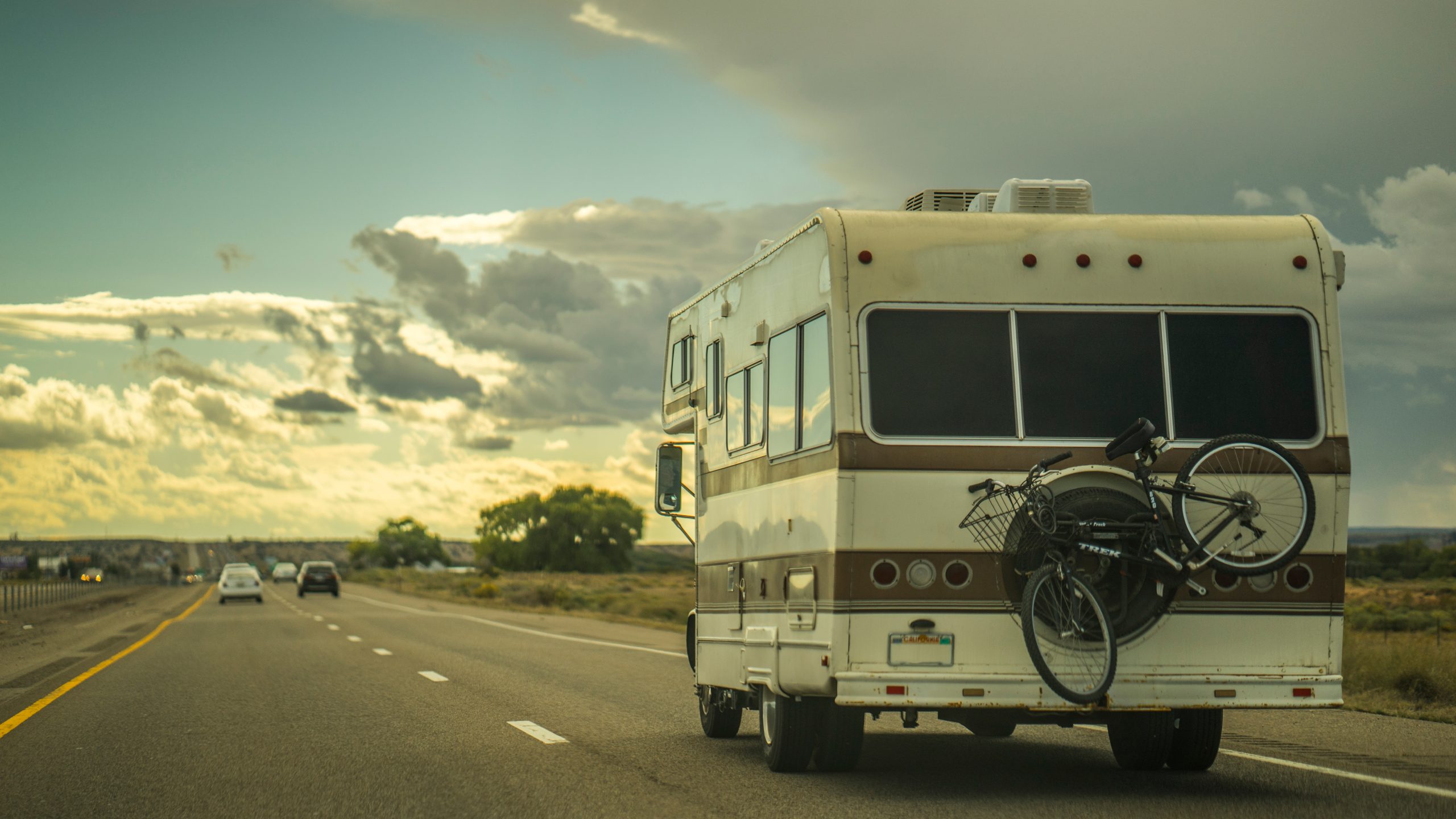When it comes to RV driving safety, most of the conversation centers around vehicle weight, braking distances, and wide turns. But there’s another topic RV owners should be aware of — lane splitting.
While lane splitting is a practice associated with motorcycles, it directly impacts RV drivers, especially when sharing the road in heavy traffic. Knowing the laws, risks, and how RV insurance companies view lane-splitting incidents can help keep you safer and protect your coverage.
What Is Lane Splitting?
Lane splitting, also known as white-lining, happens when a motorcyclist rides between two lanes of slow-moving or stopped traffic — usually on highways or in city congestion. It’s different from:
- Lane filtering – moving between cars at slower speeds, often at stoplights.
- Lane sharing – two motorcycles riding side by side in one lane.
While lane splitting can reduce traffic for motorcyclists, it can create unexpected hazards for RV drivers. Large vehicles have bigger blind spots, and a motorcycle suddenly appearing between lanes can leave little room or reaction time to avoid a collision.
Where Lane Splitting Is Legal
In the U.S., California is the only state that explicitly allows lane splitting under the California Vehicle Code. Five other states — Arizona, Colorado, Montana, Utah, and Minnesota — permit lane filtering under specific conditions, such as low traffic speeds and clear lane space.
In other states, lane splitting is either illegal or exists in a legal gray area, and RV insurance companies may consider it reckless driving if it leads to an accident.
How Lane Splitting Affects RV Insurance
Even though RVs are not the ones lane splitting, accidents involving a lane-splitting motorcyclist can still impact your claim:
- Fault Determination – In states where lane splitting is illegal, the motorcyclist may be found at fault. However, if the RV driver made an unsafe lane change, fault could be shared.
- Coverage Considerations – Some RV insurance companies may factor lane-splitting incidents into premium adjustments, especially if an RV driver is found partially at fault.
- Documentation Matters – Providing dashcam footage or eyewitness accounts can help clarify fault and protect your claim.
Safety Tips for RV Drivers in Lane-Splitting States
If you’re driving in California or other states where lane splitting or lane filtering is legal:
- Check mirrors often – Motorcycles can approach quickly from behind.
- Avoid sudden lane changes – Signal early and double-check blind spots.
- Leave room in traffic – Space between you and the vehicle ahead can give both you and nearby motorcycles more reaction time.
- Stay calm in congestion – Heavy traffic is where lane splitting happens most, so heightened awareness is key.
The Bottom Line on RV Driving Safety
Lane splitting may be a motorcyclist’s maneuver, but it affects every driver — especially those behind the wheel of larger vehicles. Staying aware of lane-splitting laws, anticipating motorcycle movements, and understanding how RV insurance companies assess these incidents are all part of smart, defensive driving.
By keeping RV driving safety top of mind, you’ll protect not just your RV, but everyone sharing the road with you. For added peace of mind, reach out to Happy Camper Insurance—one of the leading RV insurance companies—today. Our team is here to help you find coverage that keeps you protected wherever the road takes you.


